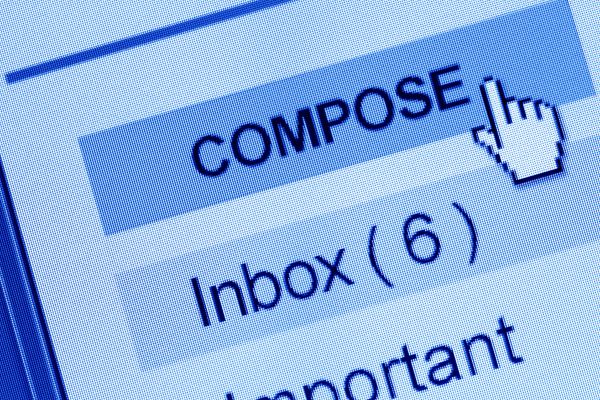In the digital age we live in, securing our online presence has evolved into an absolute necessity. Emails play a key role in our online lives. They connect us to social networks, e-commerce platforms, financial institutions, and much more. This makes email accounts treasure troves of information, tempting targets for cybercriminals. Hence, it is essential to ensure that the security of our email accounts is unbreachable.
However, email security isn’t just about safeguarding against attacks. It also serves to protect our privacy. In an era where data is currency, protecting our personal and professional information is paramount. An email account often serves as an archive of our digital lives. It contains intimate details—conversations with loved ones, exchange of documents, transaction receipts, and more. Hence, keeping an email account secure is also about ensuring that our personal lives are kept private, away from prying eyes.
Moreover, email security is not a one-time task, but rather, it is a continuous process. The landscape of cyber threats is ever-evolving, with new tactics and malware emerging regularly. This dynamic landscape necessitates that we stay vigilant and proactive in maintaining and updating our email security.
In essence, by understanding the crucial role of emails in our digital lives and the significant impact a compromised email account can have, we lay the groundwork for creating a secure email environment. In this step-by-step guide, we will walk you through the process of creating an email account that is well-equipped to ward off cyber threats, safeguard your privacy, and ensure the overall security of your online presence.
Understanding the Importance of Email Security
The first step towards securing your email account involves understanding why it matters. Your email account isn’t just a communication platform; it’s a gateway to your online persona. If compromised, a hacker could potentially gain access to all associated accounts.
Moreover, the fallout from a compromised email account can be severe, leading to data theft, financial loss, and even identity fraud. By recognizing these risks, we’re better equipped to safeguard ourselves, initiating the first steps towards secure email communication.
Choosing a Secure Email Provider
The choice of an email provider is vital. Not all email services have the same security measures in place. Opt for one that uses end-to-end encryption, strong spam filtering, and respects user privacy.
Encryption ensures that only you and your intended recipient can read your emails. If intercepted, encrypted emails are indecipherable without the decryption key. A robust spam filter, meanwhile, keeps out a majority of phishing and malware-laden emails.
Creating a Strong Password
A password serves as your primary defense against unauthorized access. A complex, unique password is harder to guess or crack. It should include a mix of numbers, letters, and symbols.
Avoid using identifiable information like your name, birthdate, or common phrases. Regularly update your password and avoid using the same one across multiple platforms. This reduces your overall vulnerability should one account be compromised.
Enabling Two-Factor Authentication (2FA)
Two-factor authentication (2FA) provides an added layer of security. Besides your password, 2FA requires a second verification step—this could be a text message, email, or app-generated code.
With 2FA, even if your password is compromised, the attacker would need the second verification factor to gain access. Most secure email providers offer 2FA, and it is a recommended feature to enable.
Understanding Phishing
Phishing is a tactic cybercriminals use to trick users into revealing sensitive information. They mimic legitimate companies in emails, attempting to fool recipients into providing login details.
Always scrutinize emails asking for personal information or promoting suspicious links. Verify the sender’s email address, and when in doubt, contact the company directly to confirm the email’s legitimacy.
Avoiding Suspicious Links
Never click on links that appear suspicious. These links can lead you to fake login pages or cause harmful software to be downloaded onto your device.
Before clicking a link, hover over it to see the destination URL. If it appears unrelated to the email content or suspicious in any way, avoid clicking.
Regular Software Updates
Ensuring your software is updated is crucial. This includes your operating system, web browsers, antivirus software, and email client.
Updates often include patches for known vulnerabilities. Staying updated reduces the risk of these vulnerabilities being exploited by malicious parties.
Using Secure Networks
When accessing your email, make sure you’re on a secure network. Public Wi-Fi networks can often be unsecured, allowing potential eavesdroppers access to your data.
If you need to use public Wi-Fi, consider using a Virtual Private Network (VPN). A VPN encrypts your data, preventing unauthorized parties from deciphering it.
Regular Account Activity Checks
Many email providers allow you to monitor the recent activity on your account. You can see the devices and locations from which your account has been accessed.
Check this regularly to spot any suspicious activity. If something doesn’t seem right, change your password immediately and report it to your email provider.
Securing Your Recovery Options
Most email accounts have recovery options in case you forget your password. These typically involve a recovery email or phone number.
Ensure these are secure, as they can also be exploited. If a hacker gains access to your recovery email, they could potentially access all your accounts.
Encrypting Your Emails
Email encryption involves encoding your messages so that only the intended recipient can decipher them. This ensures that even if your email is intercepted, it cannot be read without the encryption key.
Most secure email providers offer some form of encryption. It’s essential to enable this feature for added security.
Beware of Email Attachments
Email attachments can be a vehicle for malware. Be cautious when opening attachments, especially from unknown senders.
If an attachment looks suspicious or unexpected, do not open it. Verify with the sender if necessary.
Using Secure Email Clients
Secure email clients offer additional layers of protection. Some provide automatic encryption, phishing protection, and advanced spam filters.
Consider using a secure email client for an added level of security, especially if you handle sensitive information regularly.
Avoiding Email Tracking
Some emails contain hidden tracking pixels that allow senders to know when you’ve read their message. These can be blocked by disabling automatic image loading in your email client.
Email tracking is not inherently harmful but can infringe on your privacy. It’s advisable to maintain control over who gets to know your email activity.
Securing Associated Accounts
Your email is often linked to various online accounts—from social media to banking. These associated accounts also need to be secured.
Ensure all associated accounts use strong, unique passwords and 2FA where available.
Deleting Old Emails
Old emails can contain a wealth of information that could be exploited if your account is compromised. Regularly deleting unnecessary emails reduces the amount of data an attacker can access.
Before deleting, remember to back up any important information offline or in a secure cloud storage solution.
Managing Spam Effectively
Effective spam management reduces your exposure to potentially harmful content. Most email providers offer spam filters, but you can also report spam to help these filters learn and improve.
Avoid responding to spam emails. This lets spammers know your email is active, potentially leading to more spam.
Using Anti-Malware Software
Anti-malware software scans incoming emails for known threats. This provides an additional defense line against phishing attempts and malicious attachments.
Keep your anti-malware software updated to ensure it can detect the latest threats.
Regular Backups
Regularly backing up your email data ensures you don’t lose important information if your account is compromised.
You can back up to an external hard drive or a secure cloud storage service. Just make sure your backup is also secure.
Staying Informed
The world of online security is ever-evolving, with new threats emerging regularly. Staying informed about the latest scams, threats, and security practices can help you stay one step ahead.
Subscribe to a trusted online security news source and periodically review your security practices to ensure they’re still effective.
Conclusion
Email security is an essential aspect of securing your online presence. By following these 20 steps, you can create a robustly secure email account. Remember, online safety is an ongoing task—not a one-time setup. As threats evolve, so should your defenses. Stay informed, stay vigilant, and stay secure.



